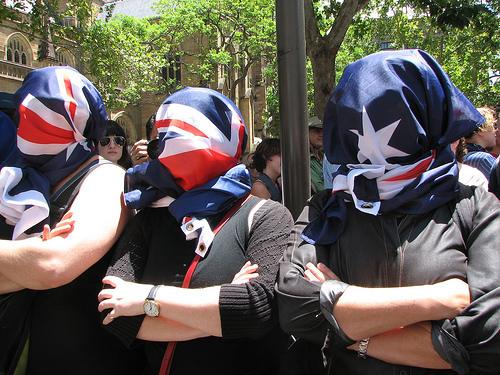The limits of force/choice discourses in discussing Muslim women's dress codes
Main Article Content
Abstract
Article Details
Section
References
ABC Radio National (2005) "Bronwyn Bishop responds to the Aussie Mossie", The National Interest, 28 August 2005, < http://www.abc.net.au/rn/talks/natint/stories/s1447773.htm >
Adonis (2003) "Hijab for the head or Hijab for the Mind?" T. Thornton trans. From theArabic Press. < http://www.nmhschool.org/tthornton/adonis_on_veil.php >
Anon "The Question of Hijab and Choice", SoundVision.com < http://www.soundvision.com/Info/news/hijab/hjb.choice.asp >
Brown, J., Rounds, K. & Armstrong, S. (2002) "A coalition of hope", Ms 12(2): 65-77.
Cannold, L. (2005) "For equality, ban the hijab in public schools", The Age, Melbourne, 31 August 2005. < http://www.theage.com.au/news/opinion/for-equality-ban-the-hijab-in-publicschools/2005/08/30/1125302562666.html >
Dreher, T. & Simmons, F. (2006) "Australian Muslim Women's Media Interventions", Feminist Media Studies 6(1): 101-120.
Dwyer, C. (2000) "Negotiating diasporic identities: Young british south asian muslim women", Women's Studies International Forum 23(4): 481. https://doi.org/10.1016/S0277-5395(00)00110-2
Ho, C. (2007) "Muslim women's new defenders: Women's rights, nationalism and Islamophobia in contemporary Australia", Women's Studies International Forum 30:4: 290-298. https://doi.org/10.1016/j.wsif.2007.05.002
Human Rights and Equal Opportunity Commission (2004) Isma - Listen: National consultations on eleminating prejudice against Arab and Muslim Australians < http://www.humanrights.gov.au/racial_discrimination/isma/report/index.html >
Kolhatkar, S. (2003) "'Saving' Afghan Women", Peuples & Monde, 22 Décembre, 2003. < http://www.peuplesmonde.com/article.php3?id_article=12 >
Lerner, Sharon (2001) "What Women Want", Village Voice, Nov 6, 2001: 53-55.
Mattar, D. T. (2006) "Edited Transcript of Sheik Hilali's speech", The Australian, Sydney, Oct 22, 2006, < http://www.theaustralian.news.com.au/story/0,20867,20653032-601,00.html >
Roy, O. (2004) Globalised Islam: the search for a new Ummah, C.Hurst & Co Publishers London.
Shadid, W. D. & Van Koningsveld, P. S. (2005) "Muslim Dress in Europe: Debates on the headscarf", Journal of Islamic Studies 16(1): 35-61. https://doi.org/10.1093/jis/16.1.35
Wadud, A. (2006) Inside the Gender Jihad: Women's Reform in Islam, OneWorld, Oxford.
